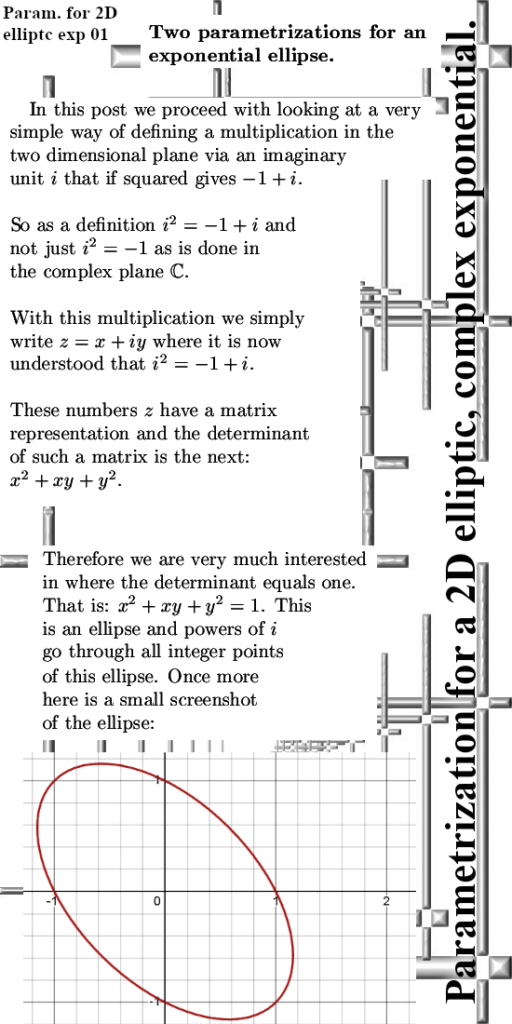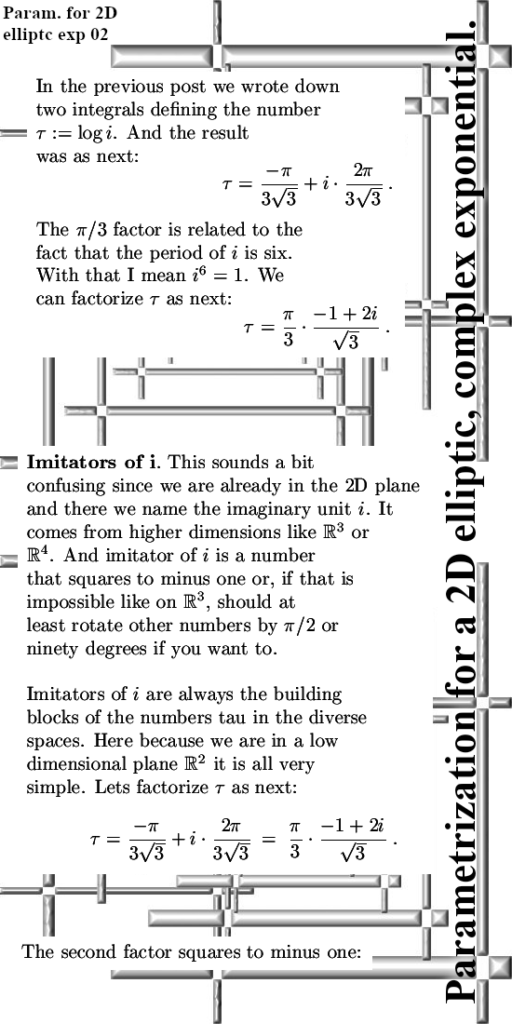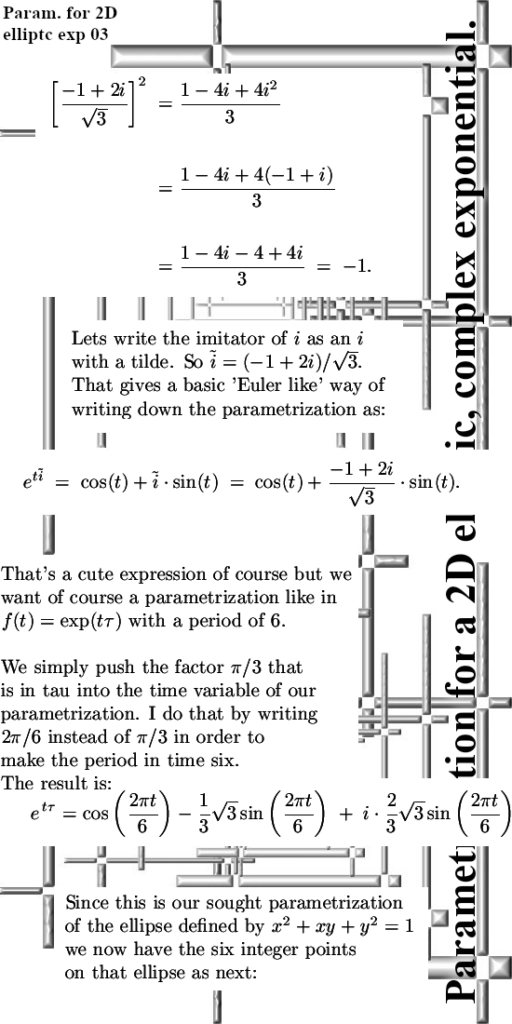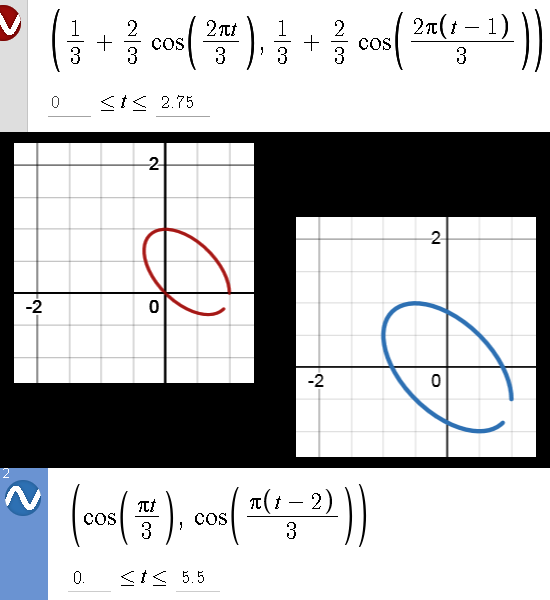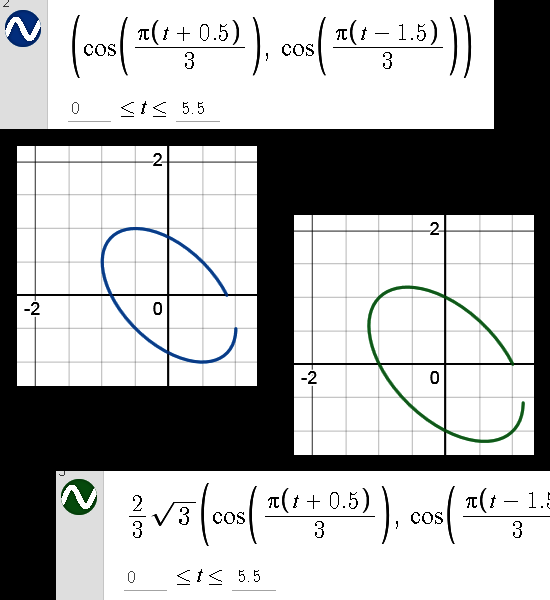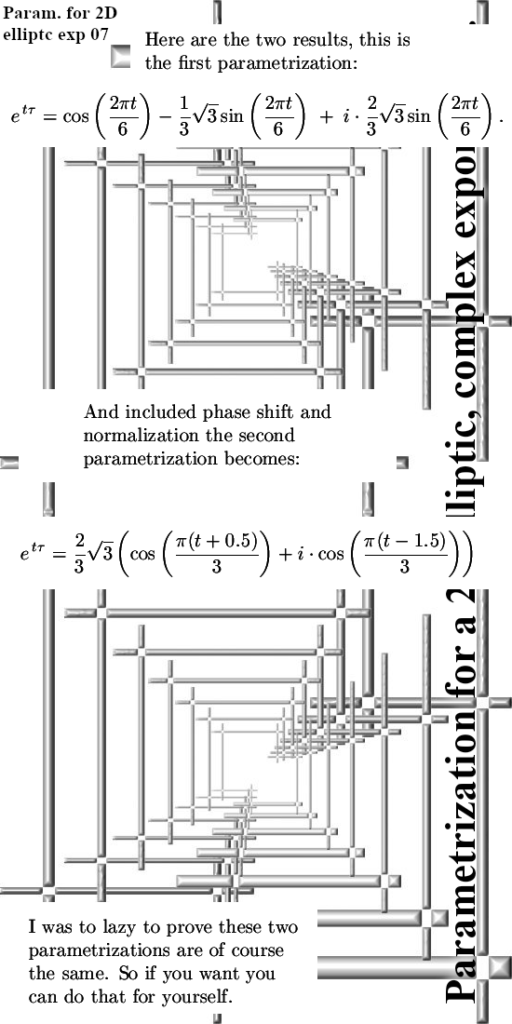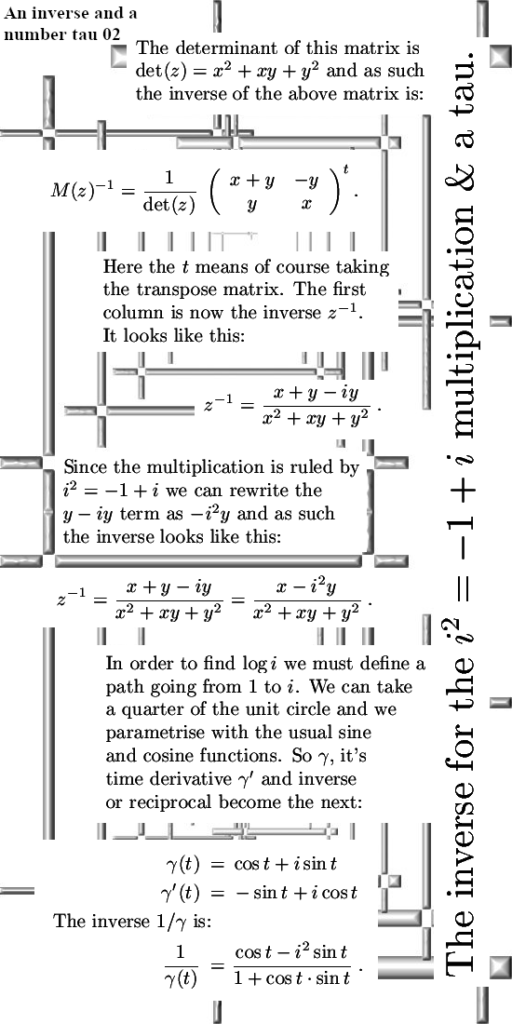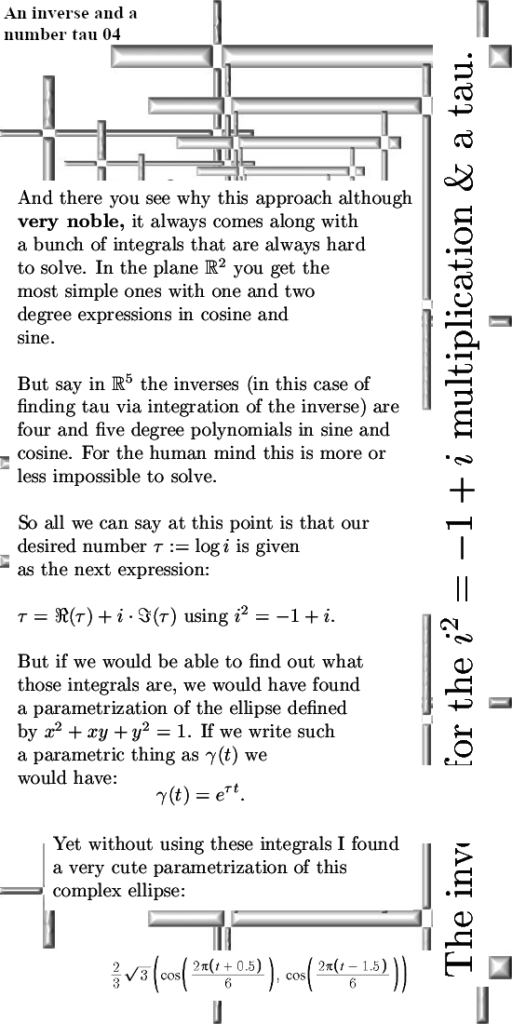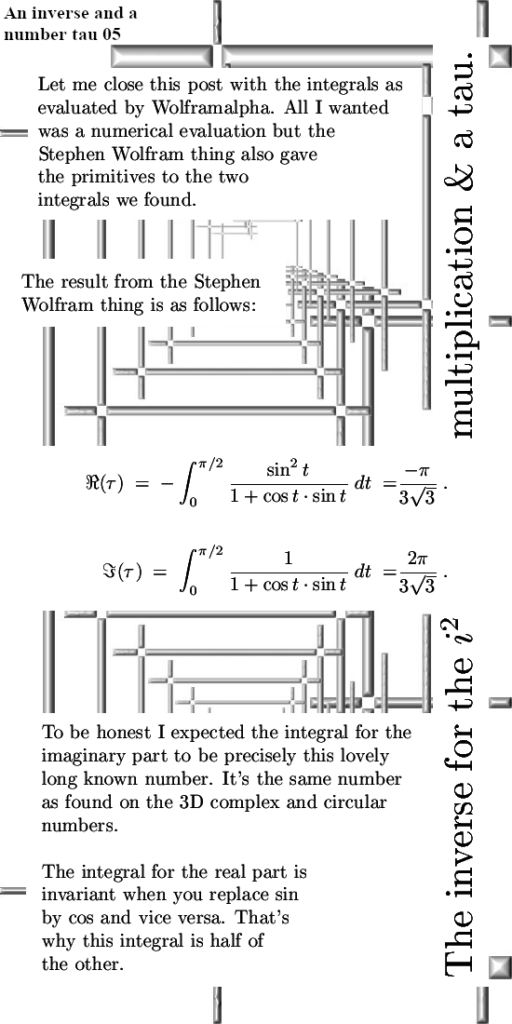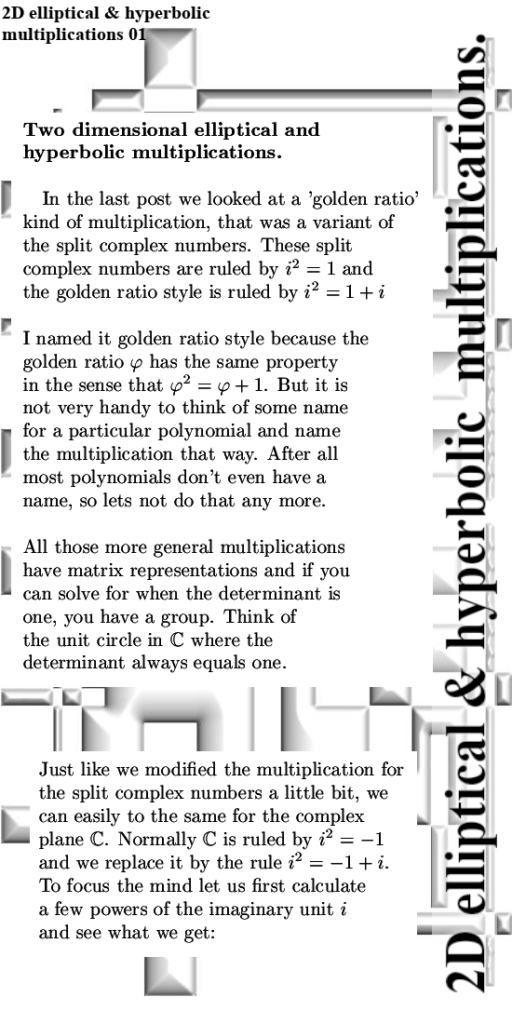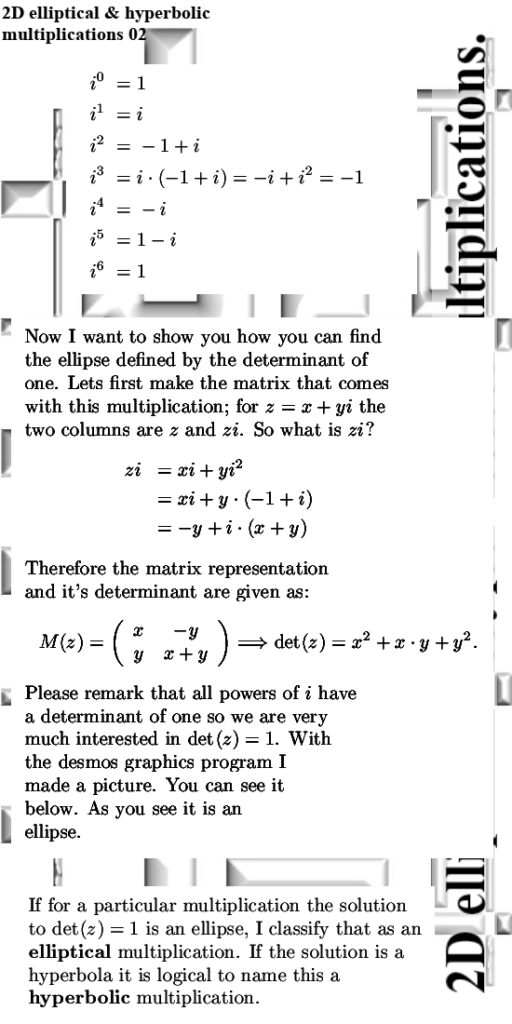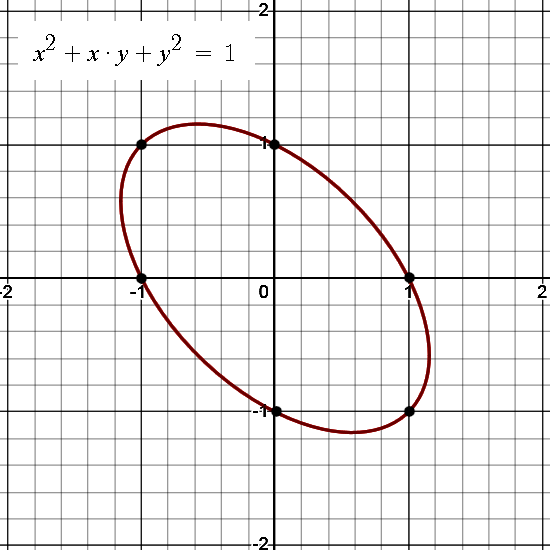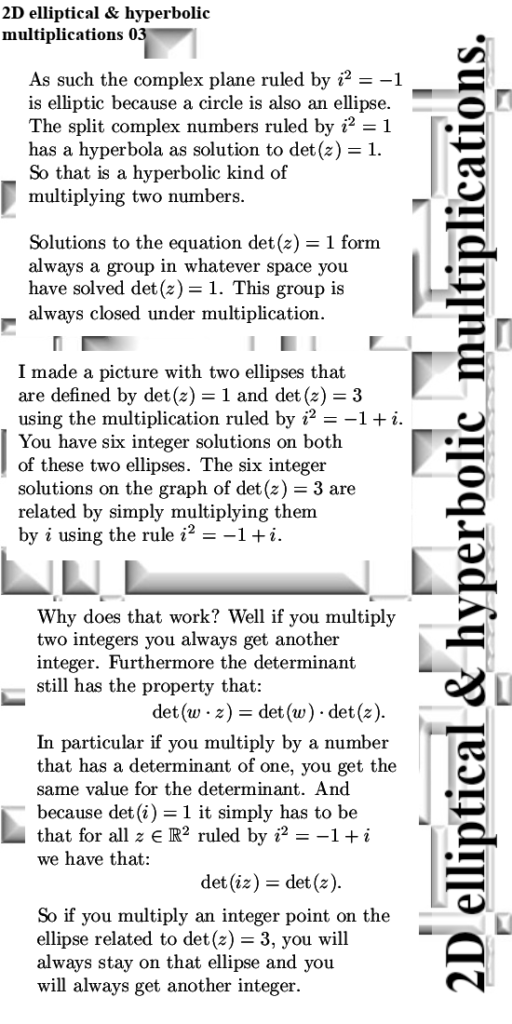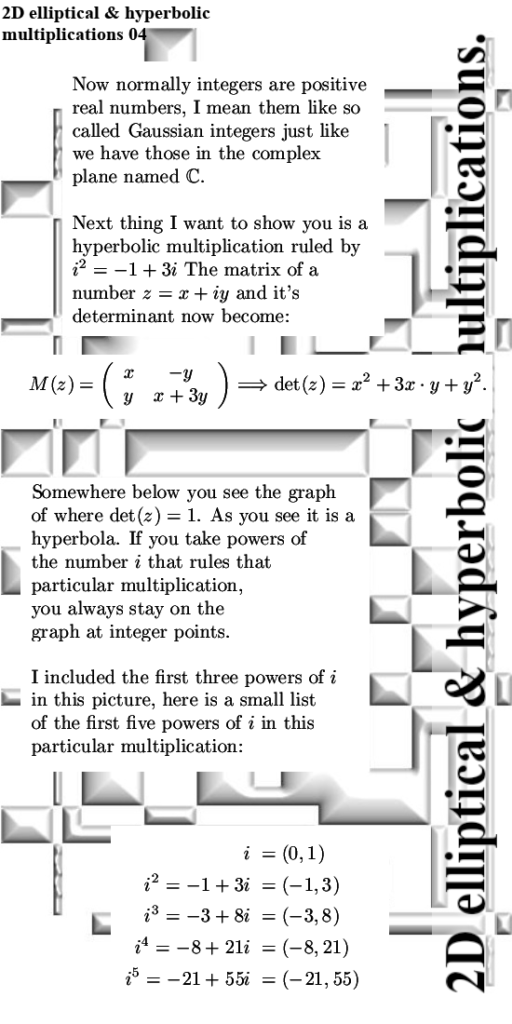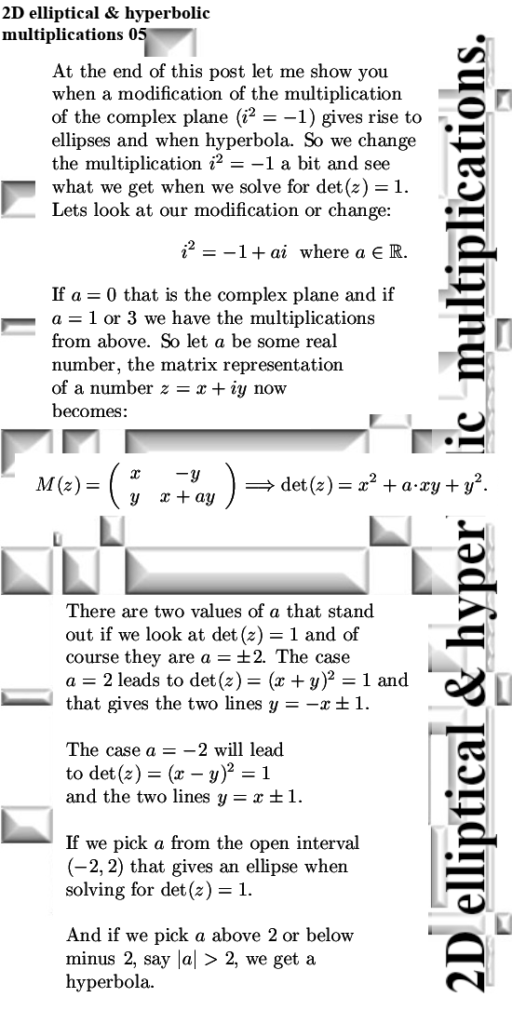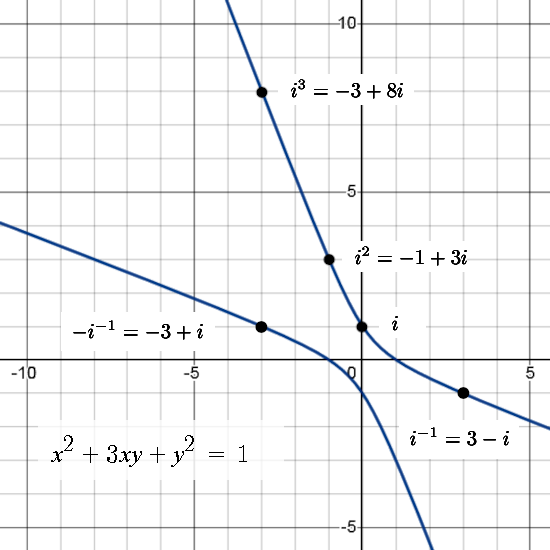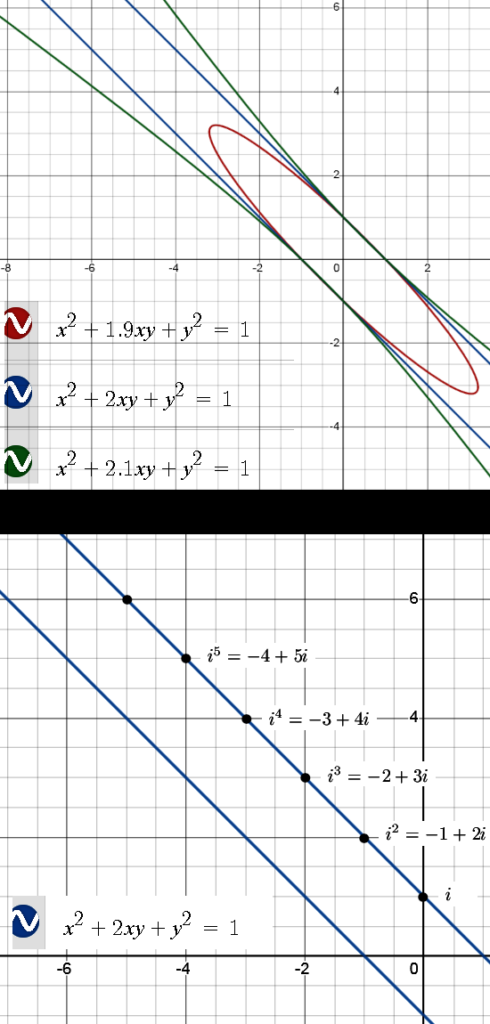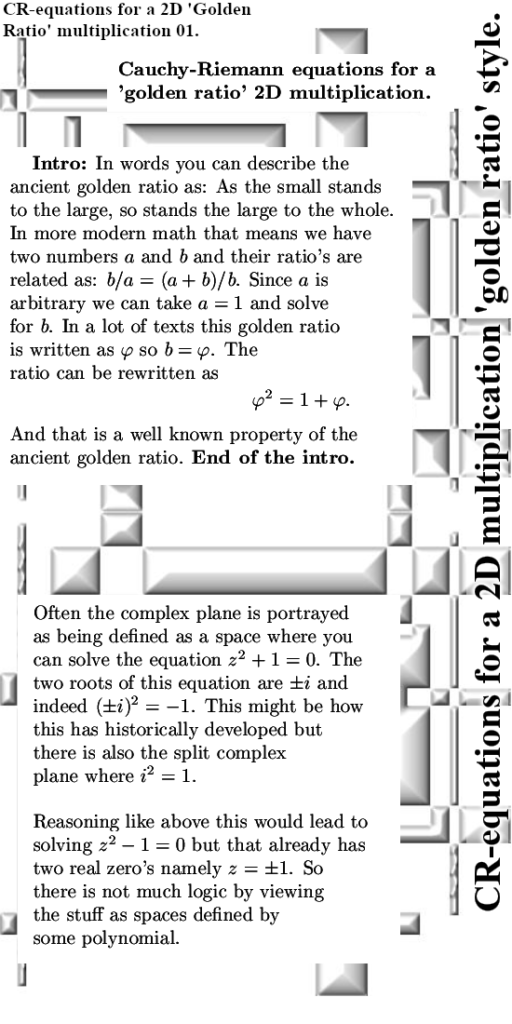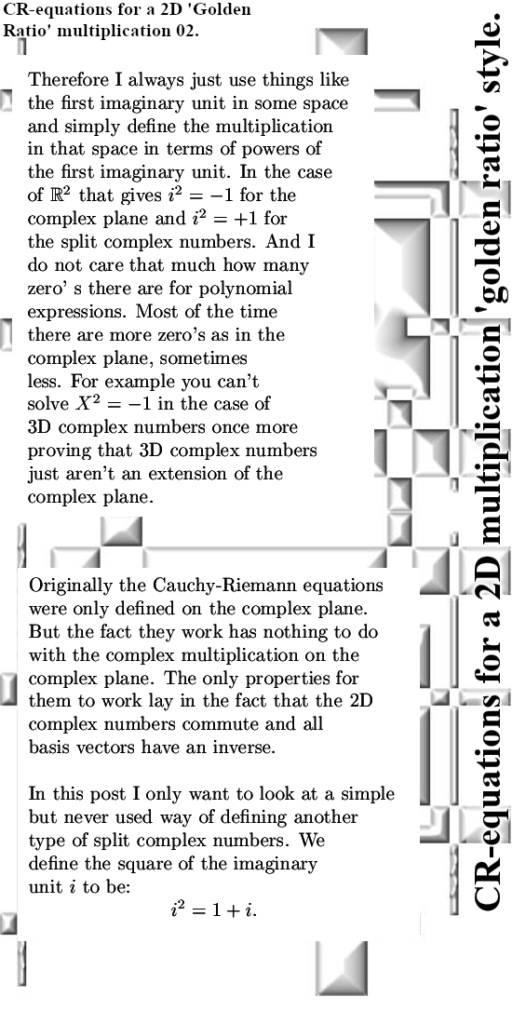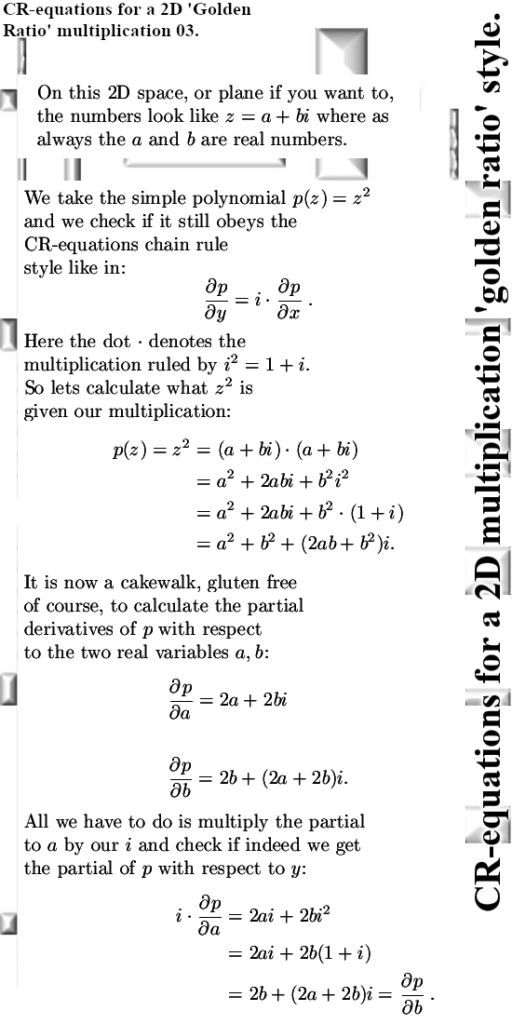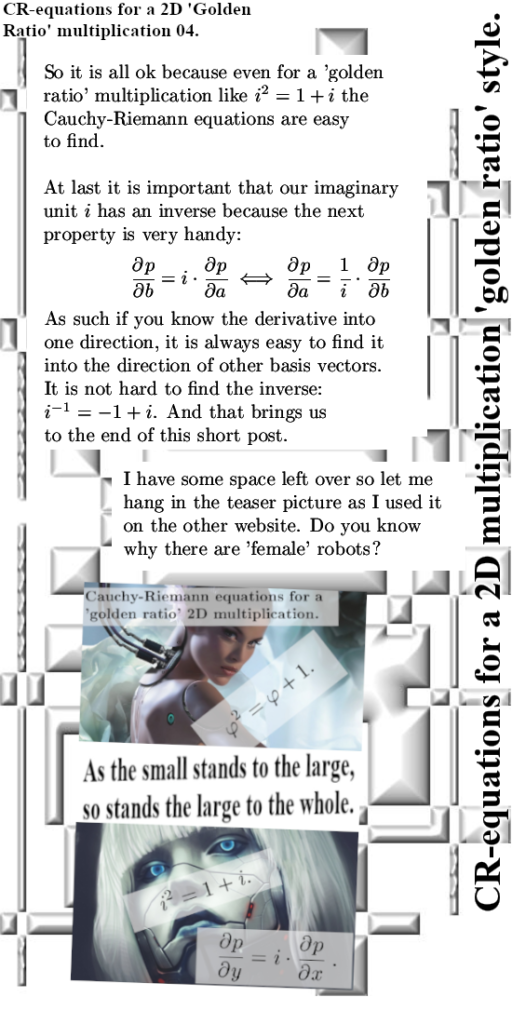We already have found some parametrizations for the complex exponential (that ellipse, see previous posts below) we do not really need such an identity. But they are always fun to make such identities in a new number system under study like lately those elliptical and hyperbolic multiplications in the plane.
Lets recap what we have done all these posts:
1) We looked at the matrix representations for 2D numbers ruled by i^2 = -1 + i. The determinant of such matrices was x^2 + xy + y^2. Therefore we wanted to know more about the ellipse that gives a determinant of 1.
2) We found a way to take the logarithm of the imaginary unit i by taking the integral of the inverse from 1 to i. That is the number tau for this kind of multiplication. As such we had a complex exponential only now it covered that ellipse.
3) After that we had to find parametrizations of the complex exponential, actually we found two of them via very different idea’s. It was left totally unproven that the two were the same although in for example the Desmos graphing package they covered the same ellipse. (But that is not a real math proof of course).
4) That is this post: Penning down the de Moivre identity or formula for this particular kind of 2D multiplication. So we can end the recap here.
The post is seven pictures long and I made them a bit larger this time: 550×1200 pixels. There’s also two additional figures so all in all very much pictures for so little math. I like the end result a lot, ok ok it is not very deep math but it looks damn cute in my opinion.
So I hope you will have fun reading it and thinking about the math involved in this post on 2D multiplications.
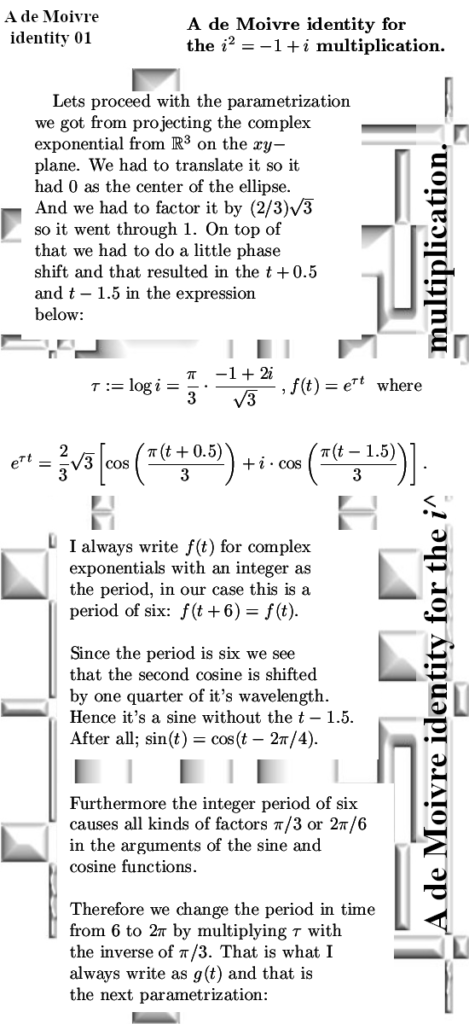
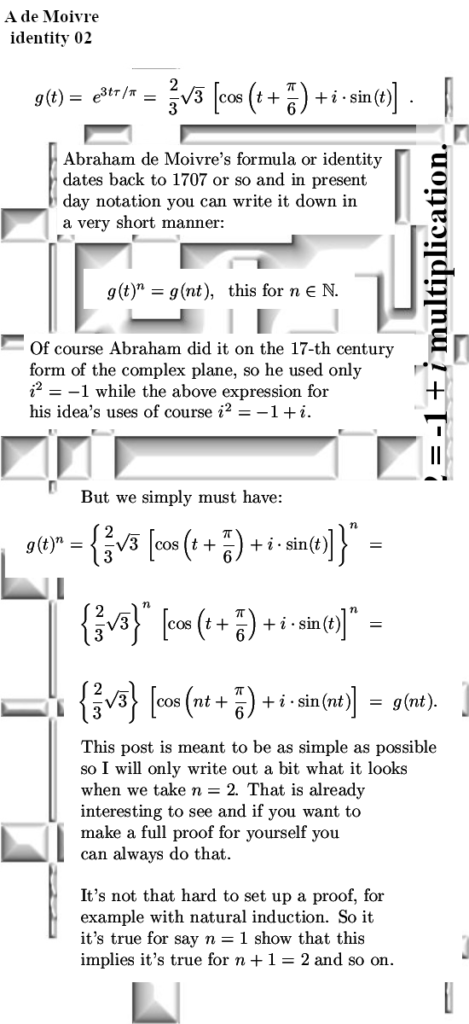
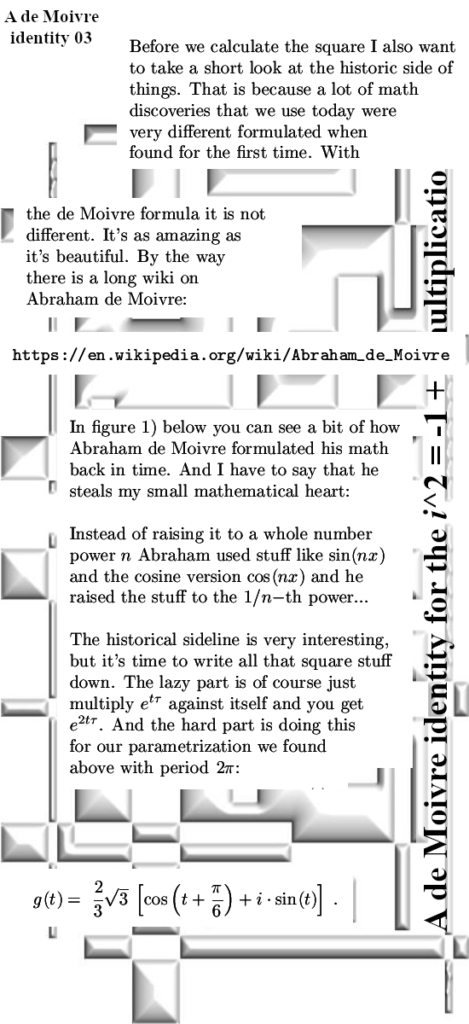
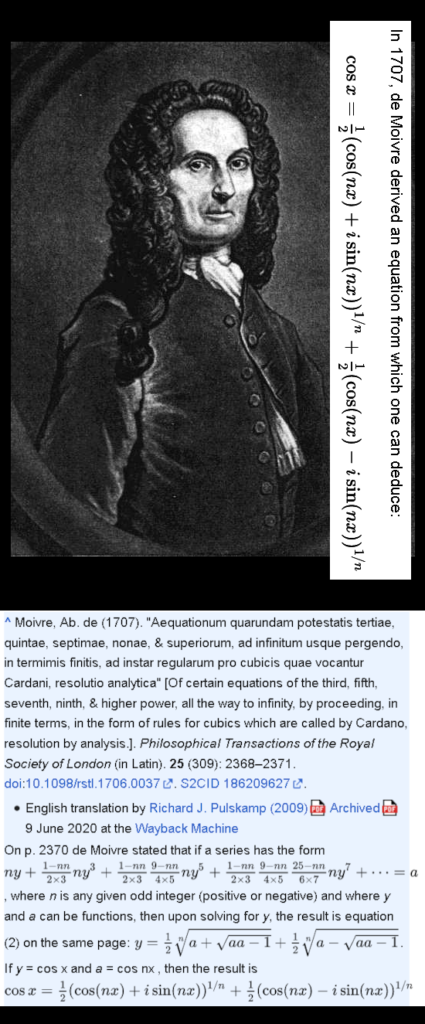
Here is a link to a more general wiki upon Abraham de Moivre:
https://en.wikipedia.org/wiki/Abraham_de_Moivre.
In the next figure you can see that three of the equations give rise to the same graph in the Desmos package while of course again remarking this is not what a math proof should be…
Please ignore the typo (6) in the equation for the blue graph while remarking that Desmos still spits out the correct answer.


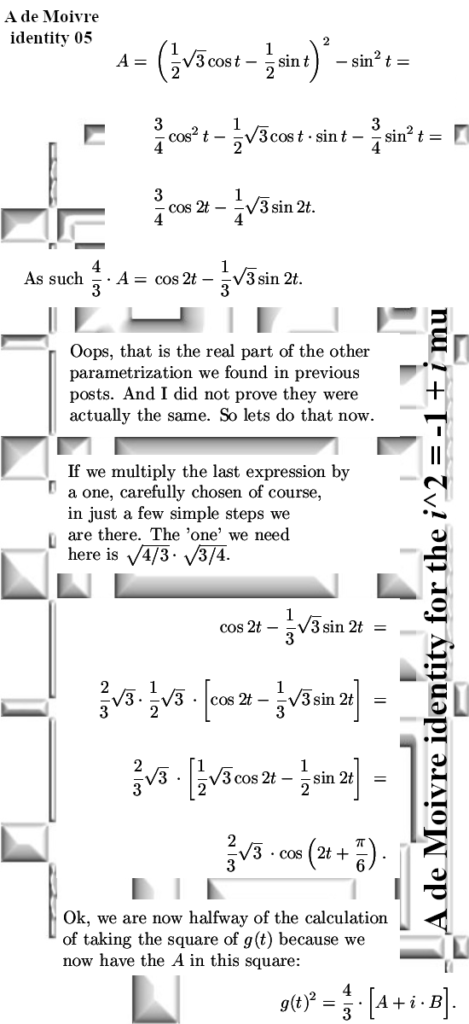

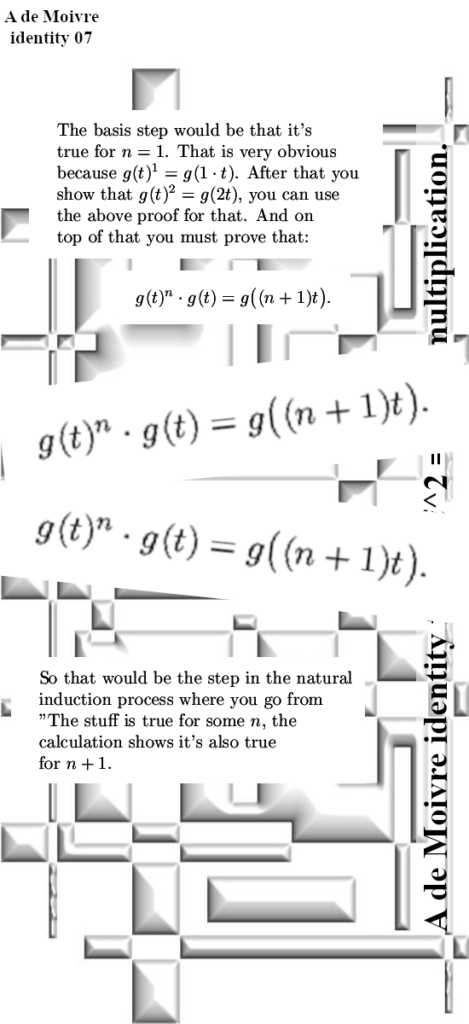
That was it for this post. May be the next post is on the conjugate or may be a post on magnetic stuff. I don’t know yet but I do know I want to thank you for your attention.
